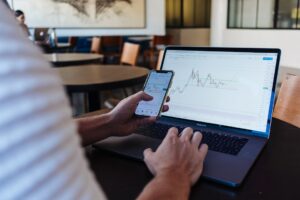Implementing Machine Learning in Forex Trading using Python
Forex trading is a highly dynamic and complex market that requires traders to make rapid decisions based on various factors. With the advancement of technology, traders have started to explore the use of machine learning algorithms to analyze market data and make more accurate predictions. In this article, we will discuss how to implement machine learning in forex trading using Python.
Python is a popular programming language among data scientists and machine learning practitioners due to its simplicity and extensive libraries. It provides various tools and libraries such as NumPy, Pandas, and scikit-learn, which are essential for implementing machine learning algorithms.
Before diving into the implementation, it is crucial to understand the basic concepts of forex trading and how machine learning can be applied to it. Forex trading involves buying and selling currency pairs based on the exchange rate fluctuations. Traders analyze historical market data, economic indicators, and other factors to make informed trading decisions.
Machine learning algorithms can be used to analyze large volumes of historical data and identify patterns or trends that can help predict future price movements. By training a machine learning model on past data, traders can make predictions about future market conditions and adjust their trading strategies accordingly.
Now, let’s discuss the steps involved in implementing machine learning in forex trading using Python:
1. Data Collection: The first step is to collect historical forex data. This data can be obtained from various sources such as online platforms, brokers, or forex data providers. The data should include features such as opening price, closing price, high and low prices, trading volume, and any other relevant indicators.
2. Data Preprocessing: Once the data is collected, it needs to be preprocessed before feeding it into the machine learning model. This involves tasks such as removing missing or incomplete data, normalizing the data to a common scale, and splitting the data into training and testing sets.
3. Feature Engineering: Feature engineering is the process of selecting and creating relevant features for the machine learning model. In forex trading, features may include technical indicators such as moving averages, relative strength index (RSI), or Bollinger Bands. These indicators can provide valuable information about market trends and price movements.
4. Model Selection: There are various machine learning algorithms that can be used for forex trading, including regression models, decision trees, random forests, and neural networks. The choice of model depends on the specific requirements and characteristics of the data. It is essential to experiment with different models and evaluate their performance using appropriate metrics such as accuracy or mean squared error.
5. Training and Testing: After selecting the model, it is time to train it on the historical data. The model learns from the patterns and relationships in the data to make predictions about future market conditions. It is crucial to evaluate the model’s performance on a separate testing set to ensure its effectiveness and generalization capability.
6. Strategy Implementation: Once the model is trained and tested, it can be used to make real-time predictions in forex trading. Traders can incorporate the predictions into their trading strategies to identify potential entry and exit points. However, it is important to note that machine learning models are not foolproof and should be used in conjunction with other indicators and market analysis techniques.
7. Model Evaluation and Improvement: Forex markets are highly volatile and constantly changing. Therefore, it is crucial to regularly evaluate the performance of the machine learning model and make necessary improvements. This may involve retraining the model with updated data, fine-tuning the model parameters, or exploring more advanced algorithms.
In conclusion, implementing machine learning in forex trading using Python can provide traders with valuable insights and predictions to make more informed trading decisions. By collecting and preprocessing historical data, engineering relevant features, selecting appropriate models, and training and testing the model, traders can develop effective forex trading strategies. However, it is important to note that machine learning models are not a magic solution and should be used in conjunction with other market analysis techniques.





